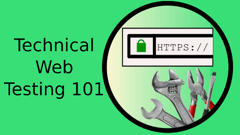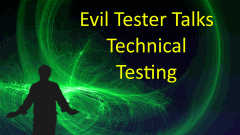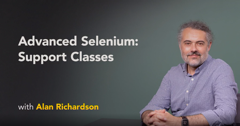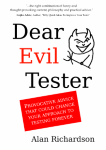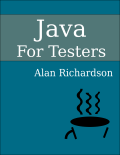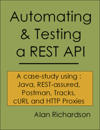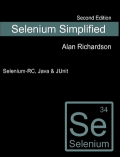Welcome to a new episode of The Evil Tester Show, where host Alan Richardson simplifies the over complicated world of test strategy. Drawing on years of experience creating test strategies and plans, Alan explains the real difference between strategy, approach, and plan. Explaining that what really matters isn’t following templates or writing elaborate documents, but actually thinking through problems, understanding risks, and communicating those ideas clearly.
In this episode, Alan explores how strategy is more than just a document; it’s a way of thinking that helps you justify your choices, say “no” to distractions, and focus on execution. He shares practical tips for making your strategies meaningful: whether you’re filling out a company template or working on Agile testing. Drawing inspiration from business and military strategy, Alan shows how asking the right questions (“what, who, why, where, when, how”) can clarify your goals and keep your work focused, no matter how often circumstances change.
If you’ve ever found yourself stuck on the difference between strategy, approach, and plan; or overwhelmed by the pressure to “not look stoopid” when writing lengthy documents, this episode is your guide to communicating with impact, and getting results from your strategy process.
Quotes
“What people really care about is that you’ve thought about the problem, you’ve thought it through, you understand the risks, you know what you’re gonna do, how you’re gonna do it, and that you know how to execute on it.”
“Weirdly, testers were the only ones that would come up with documents explaining what we were going to do. Programmers didn’t come up with a programming strategy, designers didn’t come up with a designing strategy, we came up with test strategies and that’s fine so long as there’s value in that thought process.”
Key Takeaways
-
Don’t Get Hung Up on Documents Too often, we obsess over creating “perfect” test strategy documents that end up filled with boilerplate. Instead, focus on communicating your thoughts, understanding the risks, and showing you know how to execute. The document is just a wrapper - what matters is the thinking behind it.
-
Strategy, Approach, Plan: It’s a Hierarchy
- Strategy: The “why” driving your decisions - allows you to say “NO”.
- Approach: How you’ll achieve certain things, nested under your strategy.
- Plan: The actionable steps and logistics that turn your ideas into reality.
And the real key: Execution
The process should flex to fit your situation, not slow you down.
-
If you’re stuck with a template, keep the important info front-and-center and minimize the noise. You want people to “get” your model and raise concerns early, not drown in a sea of irrelevant details.
-
Strategy Is a Process. The real value is the model you build in your head. Use categories (like objectives, beliefs, constraints, logistics) to organize your ideas and ensure you’re always ready to communicate, adjust, and defend your decisions.
-
Ask the Right Questions Instead of worrying whether something is “strategy” or “plan” ask:
- What are we doing?
- Who’s it for?
- Why are we doing it?
- Where and when?
- How are we going to execute?
The question prefixes (What, Who, Where, When, Why and How) guide your thinking.
- Agility and Execution Matter Most. Strategy and plans are only worth something if you execute and adapt as you go. Exploratory testing and working in small increments are proof that the process never ends: keep iterating, learning, and improving.
